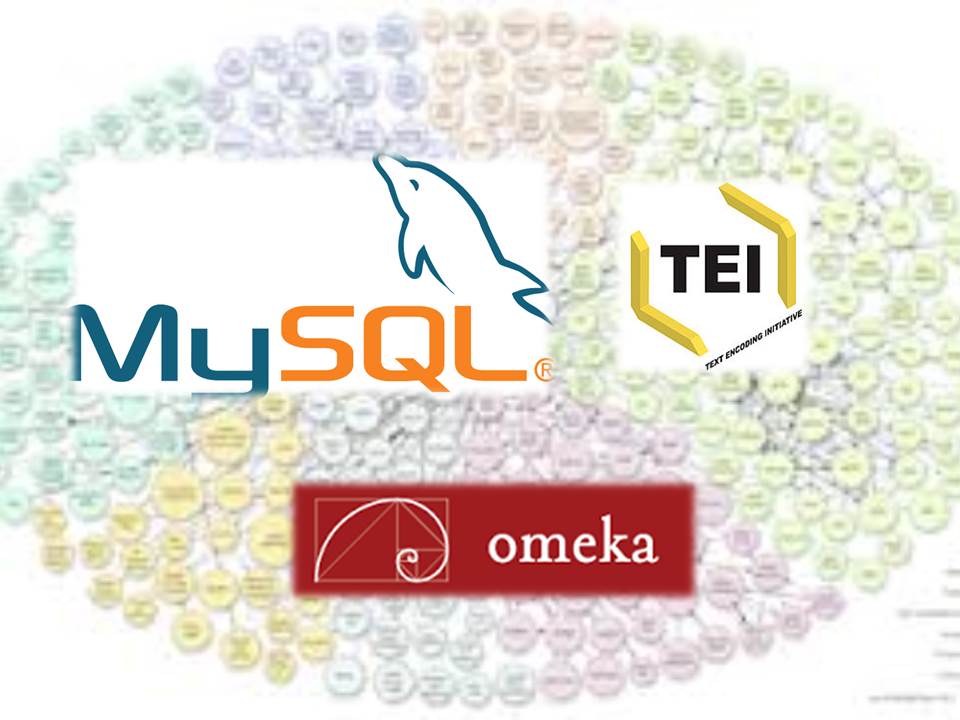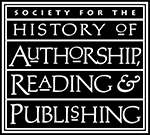After two years of working under the generous dome, I will no longer be the ACLS Public Fellow and Digital Humanities Curator at AAS. Instead, I will be the Digital Humanities Curator, a full-time staff member. My work will not change much, but this transition from fellow to staffer offers a chance for me to reflect on how we at AAS understand the relationship between digital humanities and special collections libraries.
Perhaps this position can most easily be summed up in a line I often use when explaining what I do as a digital humanities curator at a special collection whose founding was and whose collecting scope is at least a solid century before the digital was even a twinkle in anyone’s—let alone humanists’—eyes: Everything I know about digital humanities I learned from book history. When I deploy this maxim I am describing methodology: how the systems and systemization on which digital humanities rely, when done right, are those that bibliographers, catalogers, and scholars of the material record have been employing for decades. In 1912, W.W. Greg described bibliography, which he wanted to be at once more capacious and more pure as a science insofar as it is defined by how work is done, rather than what work is done to. He writes: “It is the method itself, not the object to which that method is applied, that gives [bibliography] unity.” It is this approach to the past through a particular method, through a sort of systemization that I think special collections librarians share most with digital humanists. And here at AAS it is our General Catalog that makes this connection most apparent to me. I suspect that the same is true at other libraries where decades, perhaps even centuries, have been dedicated to the work that falls under the general job description of cataloging, a term whose singlularity belies all that it entails. Special collections cataloging is after all, not one act, but instead it is multifaceted: it entails researching, describing, organizing, categorizing, referencing (and cross referencing), checking (and double-checking), formatting, coding, and programming.

All of this work is in the hopes of making the vast heap of history’s remains legible to those who come at it with myriad questions, dispositions, credentials, and experiences.
 In the past two years, as I have worked with my colleagues here to develop what are easily recognizable digital humanities projects—databases, Omeka web resources, TEI projects—I have come to understand that the AAS’s oldest and most important digital humanities project is in fact its Catalog.
In the past two years, as I have worked with my colleagues here to develop what are easily recognizable digital humanities projects—databases, Omeka web resources, TEI projects—I have come to understand that the AAS’s oldest and most important digital humanities project is in fact its Catalog.
The General Catalog, which functions as both a record of what we hold under our generous dome and as the North American Imprints Program, is the home of big data for early American bibliometrics.

As our participants at the Digital Antiquarian Workshop learned, the data in it can serve as the backbone for all sorts of maps, visualizations, exhibitions, and databases that address specific questions about print culture in the early republic. We at AAS deploy it for such purposes in house all the time, and one of my most important jobs has been teaching others how they too can make use of this data in efficient and effective ways.

And one of the most exciting parts of my job is finding out from scholars what they need from our Catalog. At the Society for the History of Authorship, Reading, and Publishing (SHARP)’s recent conference in Montreal this opportunity arose on a number of occasions, both in the Twitter stream and in person.
 A society founded over two decades ago, SHARP is the international home of the study of the history of the book, and in recent years, I have been increasingly impressed with its thoughtful, but enthusiastic embrace of the digital (to put my biases on the table: I am the e-resources editor for SHARP News). I was first drawn to SHARP as a graduate student, not only because of my burgeoning focus in the history of book for my dissertation, but also because it was one of the few places where I found academics and librarians having meaningful exchanges. Given this history of SHARP as a home for both the professor and the curator, the PhD and the MLIS, people on both sides of the reference desk, it is no surprise that the work of cataloging should be paramount in SHARP discussions, especially as SHARP embraces new tools for the work of bibliography and book history in the digital age. To these conversations, I was able to respond both in person and virtually with details of AAS’s cataloging practices. Our deep cataloging once again gave AAS much to be proud of, though I was also happy to bring back to Worcester ways in which we might improve our Catalog further. Specifically, in the year ahead, we are planning to examine if we could include subject headings for female provenance before 1900, and we also want to further examine how we might be more detailed in the subject headings we include for Native American texts.
A society founded over two decades ago, SHARP is the international home of the study of the history of the book, and in recent years, I have been increasingly impressed with its thoughtful, but enthusiastic embrace of the digital (to put my biases on the table: I am the e-resources editor for SHARP News). I was first drawn to SHARP as a graduate student, not only because of my burgeoning focus in the history of book for my dissertation, but also because it was one of the few places where I found academics and librarians having meaningful exchanges. Given this history of SHARP as a home for both the professor and the curator, the PhD and the MLIS, people on both sides of the reference desk, it is no surprise that the work of cataloging should be paramount in SHARP discussions, especially as SHARP embraces new tools for the work of bibliography and book history in the digital age. To these conversations, I was able to respond both in person and virtually with details of AAS’s cataloging practices. Our deep cataloging once again gave AAS much to be proud of, though I was also happy to bring back to Worcester ways in which we might improve our Catalog further. Specifically, in the year ahead, we are planning to examine if we could include subject headings for female provenance before 1900, and we also want to further examine how we might be more detailed in the subject headings we include for Native American texts.
I am thrilled to continue my work here at AAS, and I hope that if you have any other ideas for or suggestions concerning or needs from our General Catalog, you will be in touch with me.
